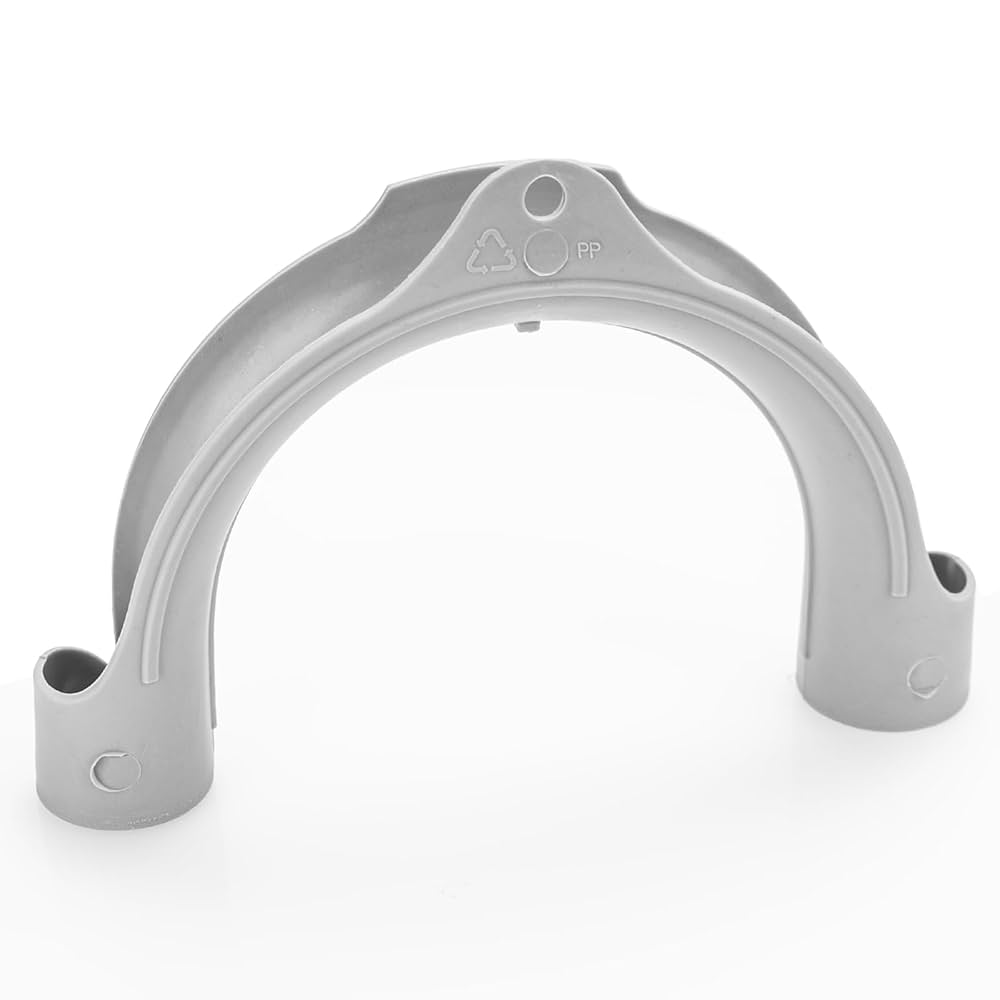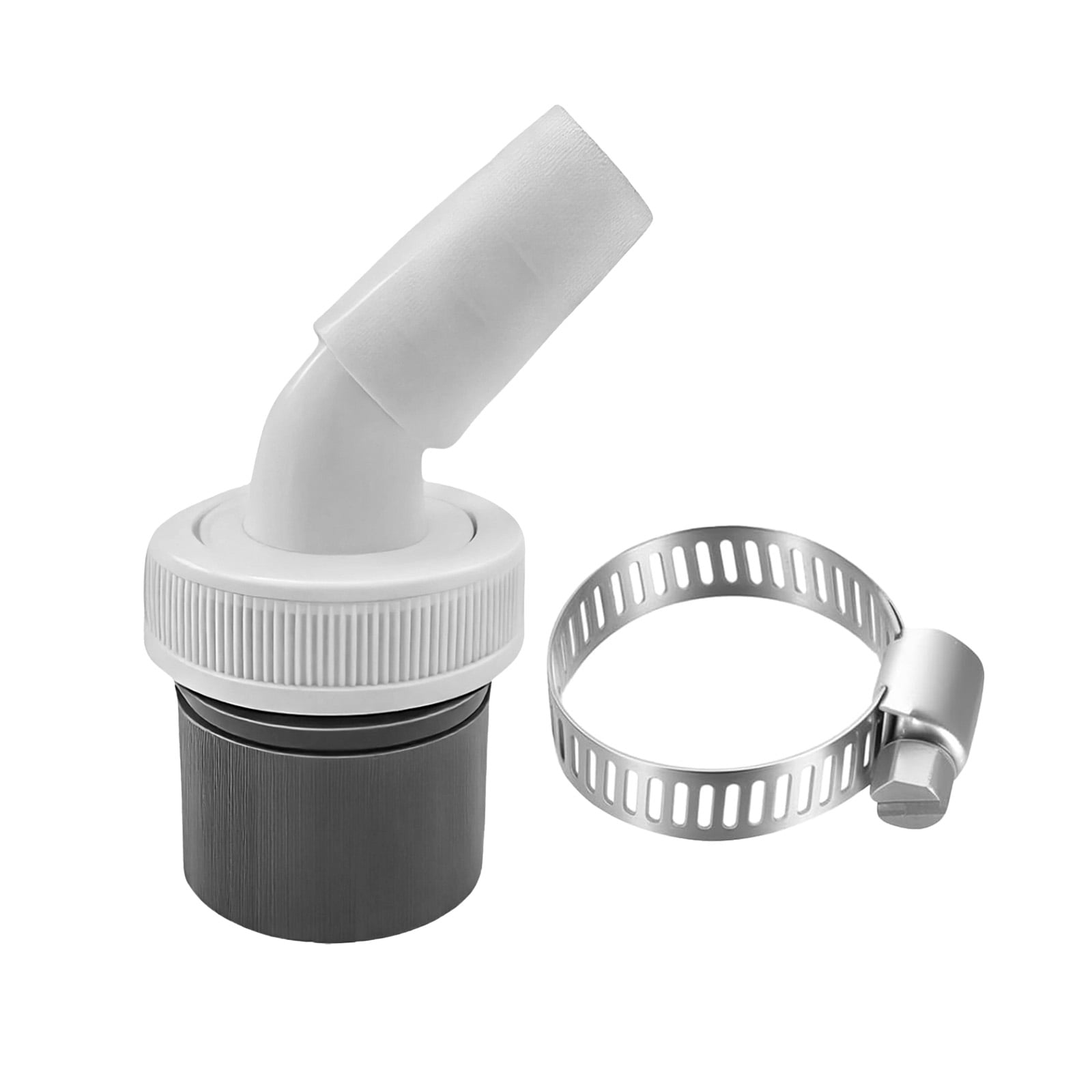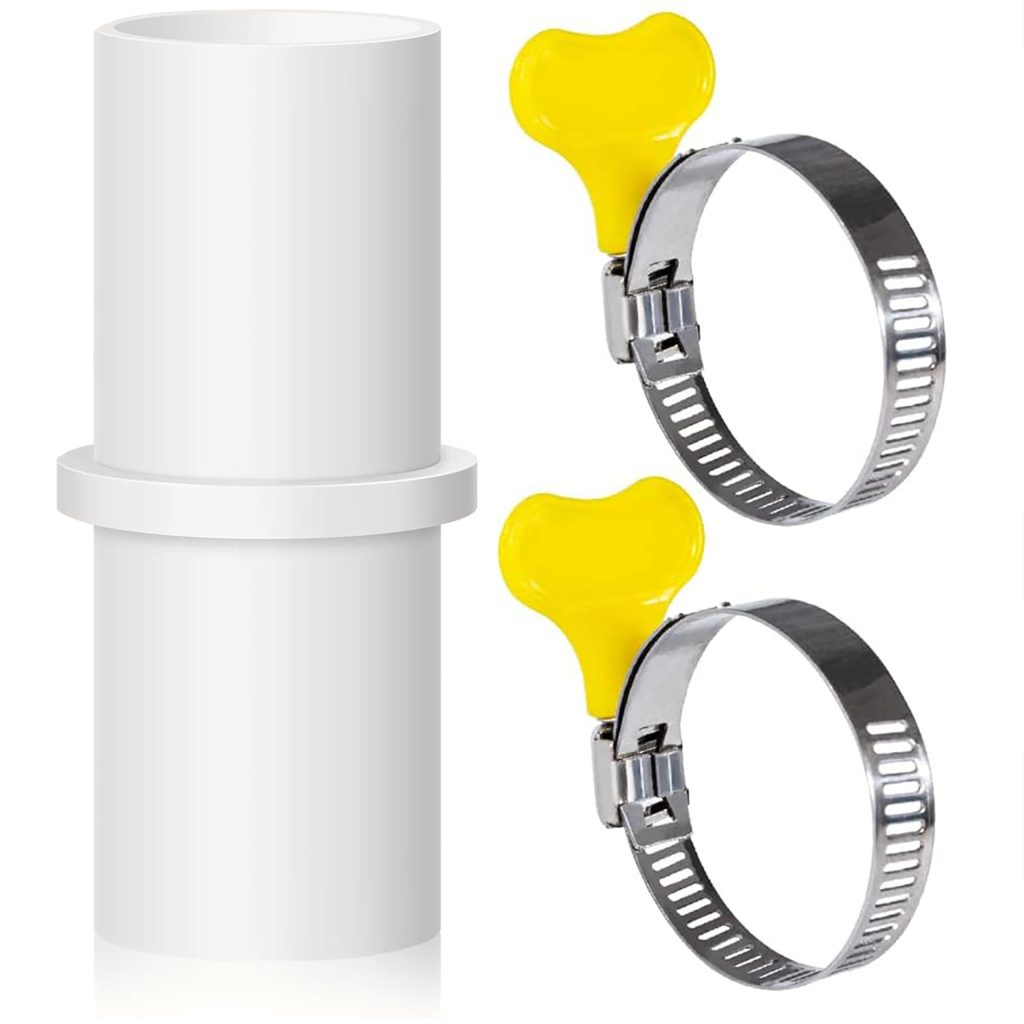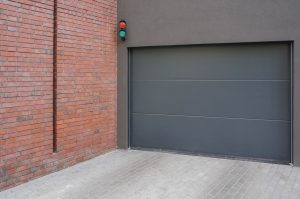Have you ever dealt with a leaky washing machine or struggled to keep the drain hose securely in place? If so, you’re not alone.
The humble washing machine drain hose clamp might seem like a small, insignificant part of your appliance, but it plays a crucial role in keeping your laundry routine smooth and hassle-free. Without it, you could face messy water spills, costly repairs, and unnecessary frustration.
You’ll discover why the drain hose clamp is so important, how it works, and what to look for when choosing the right one for your washing machine. Whether you’re fixing a current issue or simply want to avoid future headaches, you’ll find practical tips to keep your laundry setup running perfectly. Ready to dive in? Let’s make sure your washing machine stays in top shape!
Importance Of A Secure Drain Hose Clamp
The drain hose clamp may seem like a small and insignificant part of your washing machine, but its role is vital. A secure clamp ensures that wastewater flows out properly, preventing leaks and potential water damage. Without it, you risk costly repairs and a mess that no one wants to deal with.
Why A Tight Clamp Matters
A loose or improperly secured drain hose clamp can lead to unexpected leaks. Imagine finishing a load of laundry only to find water pooling on your floor. That simple clamp is your first line of defense against such headaches.
Moreover, if the clamp isn’t tight enough, the hose could detach during the spin cycle. The force of the water being expelled could cause a sudden burst, leading to flooding and potential damage to your flooring.
Signs Your Clamp Might Be Failing
Are you noticing small puddles near your washing machine? This could be a sign that the clamp isn’t holding the hose tightly. Check for rust or corrosion on the clamp, as this could weaken its grip over time.
Another red flag is any strange noises during a wash cycle. A loose clamp may cause the hose to rattle or vibrate, creating unnecessary noise and wear on the machine.
How To Ensure A Secure Clamp
- Inspect the clamp for any visible damage or wear. Replace it if needed.
- Use a screwdriver to tighten the clamp snugly around the hose. Make sure it’s secure but not overtightened, as this could damage the hose.
- Test the connection by running a quick cycle and checking for leaks. A dry floor is a good sign that you’ve done it right.
Taking these simple steps can save you from bigger problems down the road. Is your washing machine’s drain hose clamp secure? It might be time to double-check!
Common Issues With Drain Hose Clamps
The washing machine drain hose clamp is a small yet vital component. It secures the drain hose, ensuring water flows without leaks. Despite its importance, it can experience common issues that disrupt your washer’s performance. Understanding these problems helps in timely repairs and avoiding costly damage.
Loose Clamp Connection
A loose clamp can cause the drain hose to disconnect during operation. This results in water leaks, damaging your floor and nearby items. Over time, the clamp’s grip can weaken due to wear or improper installation.
Rust And Corrosion
Metal clamps are prone to rust, especially in humid environments. Corrosion reduces their strength, making them less effective in holding the hose. Regular exposure to water accelerates this issue, leading to potential failure.
Cracked Or Worn-out Clamps
Plastic clamps can develop cracks after prolonged use. These cracks compromise their ability to secure the hose tightly. Wear and tear from frequent vibrations can also degrade their performance over time.
Over-tightened Clamps
Over-tightening a clamp can damage the hose or the clamp itself. This may restrict water flow or cause the hose to tear. Improper tightening also increases the risk of leaks during washing cycles.
Improper Clamp Size
Using a clamp that’s too small or too large creates problems. An oversized clamp won’t hold the hose securely, while an undersized one can’t fit properly. Both scenarios lead to poor sealing and potential leaks.
Choosing The Right Hose Clamp
Choosing the right washing machine drain hose clamp is essential for maintaining a secure and leak-free connection. A poorly chosen clamp can lead to frustrating water leaks or even damage to your appliance and flooring. By understanding the key factors, you can make a confident decision and ensure your washing machine works efficiently.
Material And Durability
The material of the hose clamp plays a significant role in its lifespan and effectiveness. Stainless steel clamps are a popular choice because they resist rust and corrosion, making them ideal for wet environments. Plastic clamps are lighter but may not last as long, especially under high pressure.
Think about how often your washing machine is used. If it’s a daily workhorse, investing in a sturdy, durable clamp is worth it. A quality clamp ensures you won’t have to replace it frequently, saving you time and hassle.
Size Compatibility
Size compatibility is crucial for a proper fit. A clamp that’s too small won’t secure the hose effectively, while one that’s too large may cause leaks. Measure the diameter of your hose and the outlet where it attaches to confirm the right size.
Many clamps come with adjustable sizes, giving you flexibility. Look for clamps with clear size markings or specifications on the packaging to avoid guesswork.
Types Of Hose Clamps
There are several types of hose clamps, and each has unique benefits:
- Worm Gear Clamps:These are adjustable and easy to tighten using a screwdriver. They’re a great all-around choice for washing machines.
- Spring Clamps:These clamps use tension to hold the hose in place. They’re quick to install but may not be as strong as worm gear clamps.
- Wire Clamps:Lightweight and simple, wire clamps are suitable for low-pressure applications. They may not be ideal for heavy washing machine usage.
Consider the type of washing machine and how often you use it. For heavy-duty machines, worm gear clamps are often the best option. If you’re looking for convenience, spring clamps might be a better fit.
Step-by-step Installation Guide
The washing machine drain hose clamp is an essential component. It prevents water leaks and ensures the hose stays securely in place. A proper installation is crucial for the machine to work efficiently. Follow this step-by-step guide to install the clamp correctly.
Preparing The Washing Machine
Turn off the washing machine and unplug it from the power source. Locate the drain hose at the back of the machine. Remove any debris or dirt from the hose and the outlet. Ensure the area is clean before proceeding. This helps the clamp fit tightly without slipping.
Positioning The Hose Clamp
Slide the hose clamp over the drain hose. Position it near the outlet where the hose connects to the machine. Ensure the clamp aligns evenly with the hose for a secure fit. Avoid placing it too far from the connection point.
Securing The Clamp Properly
Use a screwdriver to tighten the clamp around the hose. Turn the screw clockwise until the clamp grips the hose firmly. Avoid overtightening as it may damage the hose. Check for gaps or loose spots once the clamp is secured. Ensure the hose remains straight and properly aligned.
Signs Of A Faulty Hose Clamp
Is your washing machine leaving puddles on the floor or making strange noises during a cycle? The culprit might be a faulty drain hose clamp. This small but essential component holds the drain hose securely in place, ensuring water flows out properly. When it fails, you’ll notice some telltale signs that shouldn’t be ignored. Let’s dive into what these signs look like and how to spot them.
Leaks Around The Hose
One of the most obvious signs of a faulty hose clamp is water leaking around the drain hose. If you notice water pooling behind or under your washing machine, it’s time to investigate. A worn-out or loose clamp can’t hold the hose tightly, causing water to escape during draining.
Check the area where the hose connects to the machine. Is there moisture or small drips? Don’t ignore these clues. Even a small leak can lead to bigger issues like water damage or mold growth.
Unusual Noises During Operation
Does your washing machine make rattling or vibrating noises while running? A faulty hose clamp could be the reason. When the clamp is loose, the hose may move or shake excessively during operation, creating those odd sounds.
Pay close attention during the spin cycle. If you hear clunking or banging noises, inspect the hose and its clamp. A quick adjustment or replacement might solve the problem.
Loose Connections
A loose connection between the drain hose and the machine is another red flag. If the clamp doesn’t secure the hose properly, it can easily slip out of place. This compromises the draining process and might even cause the hose to detach completely.
Gently tug on the hose to test its stability. If it moves or feels wobbly, the clamp likely isn’t doing its job. Tightening or replacing it can save you from a messy disaster later.
Have you noticed any of these signs? Addressing a faulty drain hose clamp early can save you from costly repairs and unnecessary stress. Take a closer look at your machine today and keep your laundry room dry and quiet!

Credit: www.amazon.com
Maintenance Tips For Long-lasting Performance
Keeping your washing machine drain hose clamp in top shape is essential for avoiding leaks and ensuring your appliance runs smoothly. A small part like the hose clamp might seem insignificant, but it plays a crucial role in securing the hose and preventing water damage. With just a little attention and effort, you can extend its lifespan and maintain your washing machine’s performance. Here are some practical maintenance tips to help you get the most out of your drain hose clamp.
Regular Inspections
Make it a habit to check your washing machine’s drain hose clamp every few months. Look for any visible signs of wear, such as rust, cracks, or bending. Even if everything seems fine, inspect the connection points to ensure the clamp is snug and secure around the hose.
If you spot water pooling around your washing machine, it could be a sign of a loose or damaged clamp. A quick visual check can save you from costly repairs down the line. Remember, catching small issues early can prevent bigger problems later.
Tightening As Needed
Over time, vibrations from your washing machine can loosen the clamp. Grab a screwdriver and gently tighten it to keep the hose secure. Be careful not to overtighten, as this can damage the hose or the clamp itself.
Feel unsure about how tight is too tight? The clamp should hold the hose firmly without causing it to bulge or crack. A little adjustment now and then can go a long way in avoiding leaks and ensuring the clamp does its job effectively.
Replacing Worn-out Clamps
If your clamp shows signs of rust, cracks, or general wear, it’s time to replace it. A worn-out clamp won’t hold the hose securely, which can lead to leaks and water damage. Replacement clamps are inexpensive and widely available at hardware stores or online.
When buying a new clamp, ensure it’s the right size for your washing machine’s drain hose. Installing a new one is straightforward—simply remove the old clamp, position the new one, and tighten it securely. Think of it as a small investment in the longevity of your appliance.
By following these simple maintenance tips, you can keep your washing machine running efficiently and avoid unnecessary headaches. Why wait for an issue to arise when a few minutes of care can make all the difference?
Benefits Of A Leak-free Drain System
A leak-free washing machine drain system is essential for a stress-free home. A secure drain hose clamp plays a key role in preventing leaks. This simple component ensures proper drainage, protecting your laundry area and home. Let’s explore the benefits of having a reliable, leak-free system.
Preventing Water Damage
Leaky drain hoses can cause water to seep onto your floors. Over time, this can damage your flooring, walls, or nearby furniture. A properly installed drain hose clamp keeps water securely in the hose. This prevents costly repairs and keeps your home safe from water-related issues.
Improved Washing Machine Efficiency
A leak-free drain system ensures smooth water flow during every cycle. Proper drainage reduces the risk of clogs or backflow in your washing machine. This helps the machine work efficiently, saving energy and time. A secure clamp supports consistent performance and longer machine life.
Peace Of Mind
Knowing your washing machine is leak-free reduces stress during laundry time. You won’t need to worry about unexpected puddles or water damage. A secure drain system allows you to focus on other tasks. It brings confidence that your home is protected from potential leaks.

Credit: www.amazon.ca

Credit: www.walmart.com
Frequently Asked Questions
What Is The Purpose Of A Washing Machine Drain Hose Clamp?
A washing machine drain hose clamp secures the hose to prevent leaks. It ensures proper drainage by holding the hose firmly in place.
How Do I Know If My Hose Clamp Is Faulty?
A faulty hose clamp may cause water leaks or loose connections. Inspect it for rust, cracks, or improper fitting.
Can I Replace A Washing Machine Hose Clamp Myself?
Yes, you can replace it yourself using basic tools. Ensure the replacement clamp fits snugly and secures the hose properly.
What Size Clamp Do I Need For My Drain Hose?
The clamp size depends on your washing machine’s drain hose diameter. Check the manual or measure the hose for accuracy.
Conclusion
A washing machine drain hose clamp plays a key role in preventing leaks. It ensures your hose stays secure and works efficiently during every cycle. Regularly check your clamp for wear or damage to avoid potential issues. Replacing a faulty clamp is simple and can save you from costly repairs.
Always choose a durable, well-fitted clamp for the best results. Proper maintenance of this small part keeps your washing machine running smoothly. With a little attention, you can extend the life of your appliance and enjoy worry-free laundry days.








